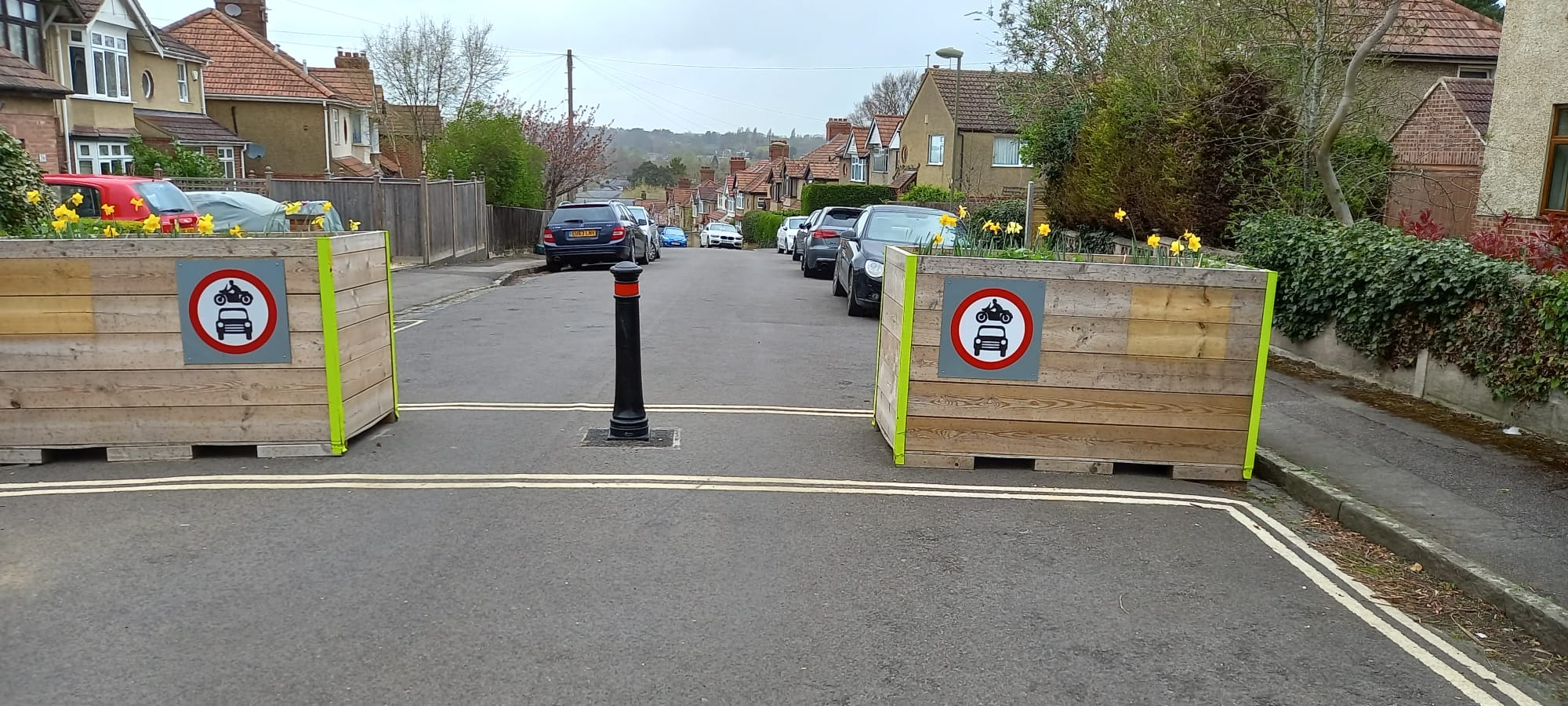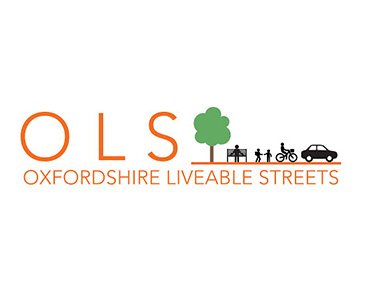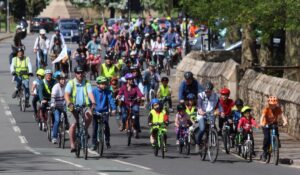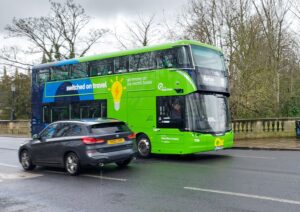Nearly six in ten people living across Oxford support Low Traffic Neighbourhoods (LTNs) such as those installed in East Oxford almost six months ago, around twice as many as oppose them. People also supported the proposed Traffic Filters, Zero Emissions Zone and Workplace Parking Levy by majorities of two or three to one.
In the first formal test of public opinion since the LTNs were put in place, a survey carried out by YouGov on behalf of CoHSAT member group Oxfordshire Liveable Streets showed that 56% of respondents supported LTNs, while only 29% opposed them. (1)
The data also showed that all age groups supported the LTNs, with younger residents (aged 18-34) backing them by a large majority*, while older people (over 55s) also backed them, though by a smaller majority (49% to 44%). The LTNs are slightly more popular with men than women, with 60% of male respondents supporting, compared to 52% of female respondents. Across both genders, just 29% of both women and men opposed LTNs. (1)
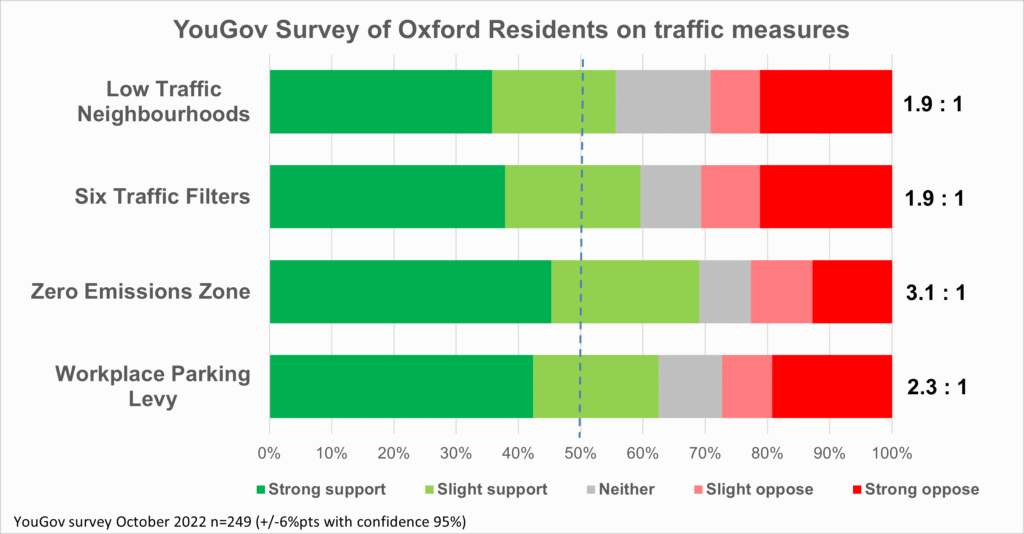
The news comes in the week of World COPD Day. (Wednesday 16 November 2022). According to the British Lung Foundation 1.4 million people in the UK are living with chronic obstructive pulmonary disease (COPD), with about the same number believed to be undiagnosed. Chronic obstructive pulmonary disease (COPD) is the third leading cause of death worldwide, and Air pollution exposure is considered an important risk factor for COPD, according to a study in medical journal The Lancet. (2,3)
Oxfordshire County Council installed bollards and planters in the Divinity Road, St Clement’s, and St Mary’s areas and a public consultation to gather views on the LTNs will close on 30 November (4). A meeting of the Council’s Scrutiny Committee this week will discuss the Central Oxfordshire Travel Plan which amongst other measures proposes traffic filters to support the LTNs in East Oxford (5).
Oxfordshire County Council distributed a survey to every home and business on Howard Street, to which respondents were 5 to 1 in favour. Council officers hand delivered a letter drop to approximately 200 houses in November last year. 70% of residents who responded to the survey supported the proposal; 13% objected; and 17% were either neutral or did not state a preference. Many residents highlighted that traffic volumes are currently high, detailing concerns of greater pollution levels and the safety of pedestrians. (6)
A separate survey by the Divinity Road Area Residents Association found residents in the area were 9 to 1 in favour of a planned LTN, with 83% of residents saying they supported the plans. (7)
While an angry minority has been vandalising and damaging the bollards in the schemes, the LTNs have proved popular with local residents and those in the rest of the city. Some residents have shown their commitment to the LTNs, by acting as ‘human bollards’ to stop car and van drivers continuing to drive through the areas illegally.
A number of locals took matters in their own hands to protect cyclists, pedestrians and children from drivers flouting the rules, sharing a video on social media about the actions which generated 35,000 views. (8)
Neelam Ali, a disabled woman of British Pakistani origin, who has lived in Oxford all her life, just near Cowley Road said:
“The LTNs are a brilliant system which I have been thoroughly enjoying, giving me more freedom and independence as an electric wheelchair user.
“LTNs and quieter streets have opened up so many local streets so that everyone can travel, walk, cycle, scooter and wheel safely within them. Also it has cut down pollution in my neighbourhood.
“My best LTN street is Cornwallis Road because I can wheel at top speed, safely in the middle of the road because of the camber.
“James Street is a regular route that I use to get from Iffley Road to Tesco on Cowley Road.
“Before the LTNs were in place, this used to be a very challenging trip, trying to avoid the household bins scattered about obstructing the pavements , parked cars on pavements, and flytipping.
“Now I really enjoy riding in the middle of the road. I can get to my destination a lot quicker without being stressed out about trying to get past obstacles on the narrow pavements.”
Neelam Ali
Evin Abrishami, a community nurse who lives in Cowley where a low traffic neighbourhood has been in place for six months, said:
“As a single Mum and community mental health nurse associate, I know how difficult people’s lives can be, but the LTNs are working for me.
“I visit my patients by e-scooter, bike or by car if I need certain equipment. It definitely raises a smile when I turn up in my uniform on the e-scooter! The LTNs do mean I have to plan my journeys a bit more, but I just think there are so many journeys that don’t NEED to be done by car.
“Often I can get there quicker on a bike or e-scooter than in the car! If I can swap to an escooter or bike with a demanding job and two kids on my own, then others can. Those who are physically capable of walking, cycling or scooting should do it – after all the biggest health risks actually come from not moving enough so as a health worker it’s natural to want to see this change.”
Robin Tucker, a member of Oxfordshire Liveable Streets and chair of COHSAT said:
“This evidence makes clear the support for LTNs. Not everyone supports them, but those causing pollution and harm often resent restrictions that stop them doing this, especially when that harm is as normalised as the private car is.
“The democratic process has been followed, and the people disrupting it are the people who are vandalising the traffic filters put in place to provide safe and healthy streets, and creating danger by driving through the prohibitions. It is vital that councillors respect the mandate they were elected on and the view of the majority, and protect and continue the LTNs.”
A Citizens’ Jury run by Oxford’s Global Centre on Healthcare and Urbanisation, which was made up of randomly selected members of the public weighted to account for local demographics, took evidence from 17 witnesses and discussed the issues over four days, agreed the LTNs should be part of the solution to Oxford’s transport, health and climate change problems. (9)
Air pollution is a major health risk, with toxic air from traffic fumes contributing to cancer, asthma, stroke and heart disease, diabetes, obesity, and being linked to dementia. A January 2020 study from Centre for Cities found out that at least one in 17 deaths in Oxford is related to air pollution. (10)
The polling was carried out amongst residents in Oxford as part of YouGov’s online opinion survey within Oxford City. YouGov is an independent agency, regulated by the British Polling Council, and any questions were reviewed to ensure they did not influence participants.
A decision on whether to make the trial scheme permanent, extend or remove it will be made at a county council cabinet meeting in February 2023. Officers will recommend the decision based on factors including any feedback received, data collected on traffic and air pollution and levels of walking and cycling in these areas. (11)
ENDS
Respondents were asked the following question in the survey: LAO_Q4. ‘Low Traffic Neighbourhoods’ are residential areas where driving cars and other motor vehicles is restricted other than for access to the neighbourhood. Having read the above, would you support or oppose such a measure? (Please select the option that best applies)
| All figures, unless otherwise stated, are from YouGov Plc. Total sample size was 249 adults. Fieldwork was undertaken between 7th – 12th October 2022. The survey was carried out online. The figures have been weighted and are representative of all GB adults (aged 18+). Any sample size above 50 is considered to be statistically reliable, given the geographic size of the population. |
*Any percentages calculated on bases fewer than 50 respondents must not be reported as they do not represent a wide enough cross-section of the target population to be considered statistically reliable. These have been italicised. The majority for young people was 67% in favour, 12% against.
Editor’s Notes
-
- See Table 1 below
-
- Howard Street survey – Paragraph 51 of this Oxfordshire County Council Cabinet Report, 16 Dec 2021: https://mycouncil.oxfordshire.gov.uk/documents/s58798/CMDHM_DEC1621R12%20-%20East%20Oxford%20LTN.doc.pdf
About
The Coalition for Healthy Streets and Active Travel (CoHSAT) is a group of voluntary and campaigning organisations working across Oxfordshire to create attractive, accessible and people-friendly streets. https://cohsat.org.uk/ inOxfordshire Liveable Streets are an advocacy organisation committed to improving the lives of Oxfordshire residents through innovations in neighbourhood design, street and highway layout, and transport infrastructure. https://oxlivsts.org.uk/
Full tables:
| ‘Low Traffic Neighbourhoods’ are residential areas where driving cars and other motor vehicles is restricted other than for access to the neighbourhood.Having read the above, would you support or oppose such a measure? (Please select the option that best applies) | |
| Unweighted base | 249 |
| Base: all Oxford adults | 249 |
| Strongly support | 36% |
| Slightly support | 20% |
| Neither support nor oppose | 15% |
| Strongly oppose | 21% |
| Slightly oppose | 8% |
| Net: Support | 56% |
| Net: Oppose | 29% |

 Abingdon Liveable Streets aims to improve our walking and cycling routes so that people can travel to school or work safely without needing to use their cars. The group is a collaboration of Abingdon Carbon Cutters, AbiBike, Abingdon Freewheeling, Abingdon Health Walks and the Town Council.
Abingdon Liveable Streets aims to improve our walking and cycling routes so that people can travel to school or work safely without needing to use their cars. The group is a collaboration of Abingdon Carbon Cutters, AbiBike, Abingdon Freewheeling, Abingdon Health Walks and the Town Council.

At Active Oxfordshire, we are passionate about finding sustainable approaches to fighting inactivity and challenging health inequalities.
We focus our key interventions on increasing physical activity opportunities for children and young people, older people, people living with health conditions or disabilities and people affected by mental health difficulties. We also adopt a place based approach to these interventions and, through partners, focus on the ten wards experiencing the highest levels of deprivation across Oxfordshire.
.
 Banbury Active Travel Supporters (BATS) is a project set up by Banbury Community Action Group (BCAG), keen to promote cycling, walking, and clean air in Banbury. We are looking for others who share our aims, to join us.
Banbury Active Travel Supporters (BATS) is a project set up by Banbury Community Action Group (BCAG), keen to promote cycling, walking, and clean air in Banbury. We are looking for others who share our aims, to join us.
BATS wants to see safe pavements and cycle lanes provided as through routes in Banbury, so that more people can choose to leave the car at home. Fewer cars on Banbury roads will also mean cleaner air: at present, in places Banbury has some of the most polluted roads in Oxfordshire.
 BicesterBUG aims to represent and campaign for bike use in Bicester and it’s surroundings. We see cycling as a key part of the Bicester life. Local travel to work, shops, school and for fun all has the potential to be done safely and easily by bike in our town. We work to improve the profile of cycling as a mode of transport and work with local government to improve the infrastructure provision to enable safe cycling for all no matter age or background.
BicesterBUG aims to represent and campaign for bike use in Bicester and it’s surroundings. We see cycling as a key part of the Bicester life. Local travel to work, shops, school and for fun all has the potential to be done safely and easily by bike in our town. We work to improve the profile of cycling as a mode of transport and work with local government to improve the infrastructure provision to enable safe cycling for all no matter age or background.
Bike Safe is a charity, established by people who live in or between Oxford and Eynsham. Bike Safe is campaigning for a community path alongside the busy and dangerous B4044 (Eynsham to Botley). The B4044 is a busy commuter route for cars, buses, lorries and cyclists alike. We have been campaigning for a safe cycle route into Oxford since 2011. We have a supporter base of nearly 2000 people. OCC are now highly supportive and collaborating with the final planning process.

CulBUG is an information forum for people who commute by cycle to the UK Atomic Energy Authority’s Culham Science Centre in Oxfordshire.It aims to become the cyclists’ point of contact for the Authority’s property management team and the local transport and planning authorities, so that consideration of the issues facing cyclists on site and in the locality is taken into account early in relevant planning processes.

Cyclox is the voice of cycling in Oxford. We campaign to put cycling at the heart of Oxford’s future. Our mission is to get more people cycling, more often, and more safely. We collaborate with key decision makers to put cycling on the public agenda; partner with active travel and low-carbon groups; and engage with the local community to inform, encourage, and support change.
 Harwell Campus Bicycle Users Group (HarBUG) are a group of cyclists campaigning to make it easier to cycle to the Harwell Campus and to improve facilities for cyclists and cycling on site.
Harwell Campus Bicycle Users Group (HarBUG) are a group of cyclists campaigning to make it easier to cycle to the Harwell Campus and to improve facilities for cyclists and cycling on site.


Low Carbon West Oxford (LCWO) was set up after the summer floods of 2007 by residents concerned about climate change and local flooding. It is a community-led initiative which aims
to combat climate change by cutting our community carbon dioxide emissions by 80% by 2050, encouraging residents to live more sustainably, and contributing to a more cohesive and resilient community.

Oxfordshire Cycling Network (OCN) proposes a county-wide ‘all ages, all abilities’ cycle network linking major towns, workplaces and transport hubs safe, direct and attractive routes. It is a starting point for discussions with the County Council and the public about its shape, its benefits and its costs.

Oxford Friends of the Earth is a voluntary group of people working together to promote a healthy and sustainable environment. We encourage people across Oxfordshire to be active in driving meaningful, positive change that makes a lasting difference to our environment. We have been active for over 40 years, we have various working groups, and we welcome new members.
Our work focuses on climate change, air pollution, transport, and biodiversity. We have set up the Oxfordshire Clean Air Charter, the countywide Zero Carbon Homes Initiative and Oxfordshire Trees for the Future.

Oxford Pedestrians Association represents walking, including supported mobility, as urban transport, and campaigns for wide, level direct pavements and footpaths, direct raised crossings and pavement extensions, and a reduction in motorised traffic to free up public space for other transport modes.
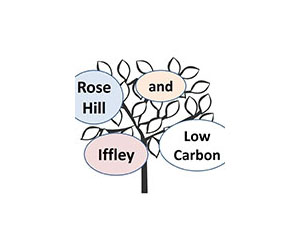
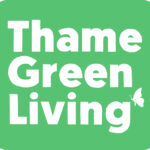
Thame Green Living are the originators of the Green Living Plan, adopted by Thame Town Council in July 2020. This is a 10-year plan for a more sustainable Thame in the things that really matter – from essentials such as clean air, water, energy and overall well-being but also a vibrant natural world around us, recognising the vital nature of the town’s links with its surrounding communities and countryside.

The key aim of Wantage and Grove Active Travel is to reduce the number of local car journeys made in our local area (typically 1-2 miles) and to replace them with active travel journeys. Cars are less efficient for such short journeys and the concentration of such journeys in narrow urban streets exacerbates air and noise pollution and danger to others. We are working to normalise active travel as a preferred option for such journeys.

Windrush Bike Project CIC is a not-for-profit social enterprise in Witney. Their team of professional staff and amazing volunteers help people from all walks of life to make everyday journeys by bike through campaigning for better routes, cycle training and repairing bikes, and to learn about bike mechanics through training courses.
Facebook Twitter Website

